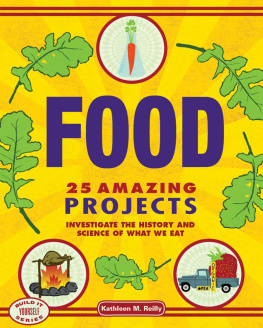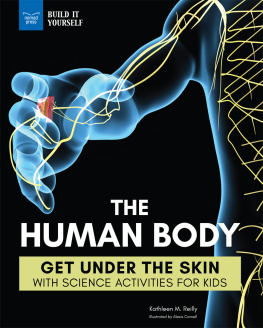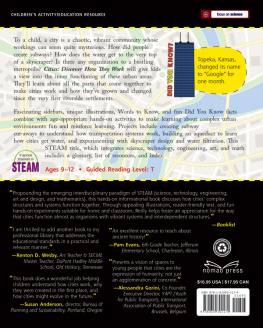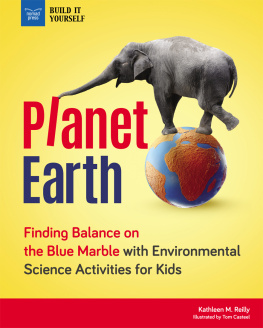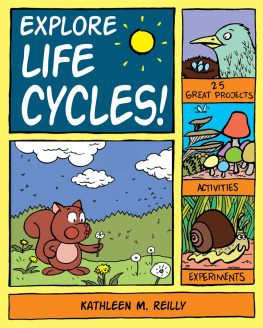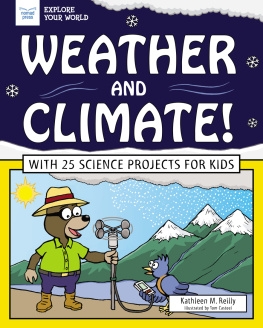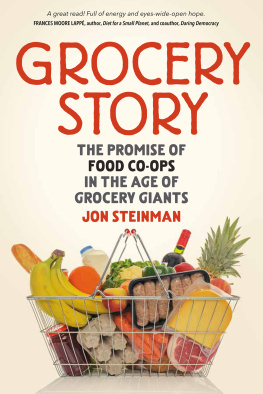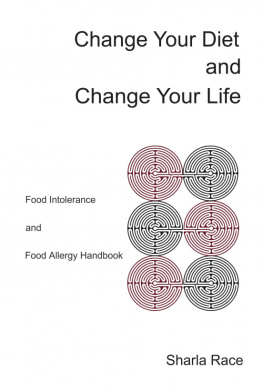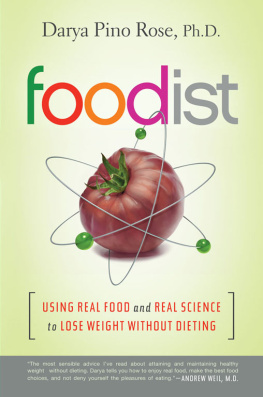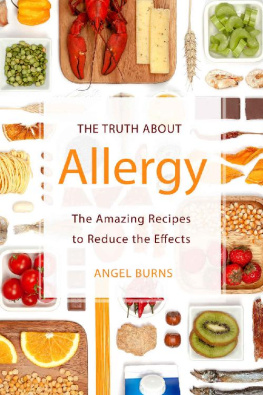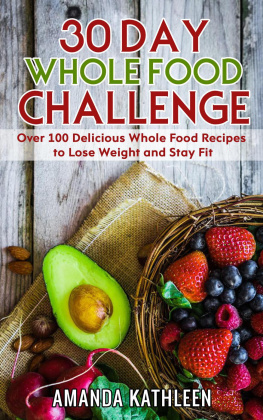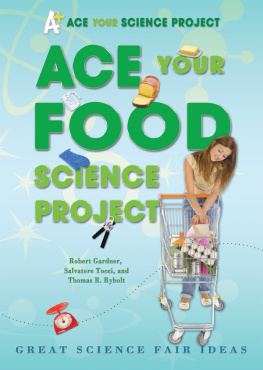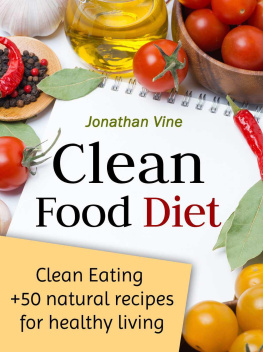

Nomad Press is committed to preserving ancient forests and natural resources. We elected to print Food: 25 Amazing Projects Investigate the History and Science of What We Eat on 4,007 lbs. of Williamsburg Recycled 30% offset.
Nomad Press made this paper choice because our printer, Sheridan Books, is a member of Green Press Initiative, a nonprofit program dedicated to supporting authors, publishers, and suppliers in their efforts to reduce their use of fiber obtained from endangered forests. For more information, visit www.greenpressinitiative.org
Nomad Press
A division of Nomad Communications
10 9 8 7 6 5 4 3 2 1
Copyright 2010 by Nomad Press
All rights reserved.
No part of this book may be reproduced in any form without permission in writing from the publisher, except by a reviewer who may quote brief passages in a review.
The trademark Nomad Press and the Nomad Press logo are trademarks of Nomad Communications, Inc.
This book was manufactured by Sheridan Books,
Ann Arbor, MI USA.
July 2010, Job # 318368
ISBN: 978-1-934670-59-0
Illustrations by Farah Rizvi
Questions regarding the ordering of this book should be addressed to
Independent Publishers Group
814 N. Franklin St.
Chicago, IL 60610
www.ipgbook.com
Nomad Press
2456 Christian St.
White River Junction, VT 05001
www.nomadpress.net

Contents
INTRODUCTION
FEELING HUNGRY?
CHAPTER ONE
PICKING THE FIRST APPLE
CHAPTER TWO
FARMING, PAST & PRESENT
CHAPTER THREE
FOOD & CULTURES
CHAPTER FOUR
I WANT IT! FOOD IN DEMAND
CHAPTER FIVE
FOOD PACKAGING
CHAPTER SIX
FOOD SAFETY
CHAPTER SEVEN
TRADITIONS & CELEBRATIONS
CHAPTER EIGHT
FOOD ACROSS TIME
CHAPTER NINE
NUTRITION
CHAPTER TEN
MEAT ME AT THE VEGGIE STAND
CHAPTER ELEVEN
BACKYARD EATING
CHAPTER TWELVE
YOURE EATING WHAT?!
CHAPTER THIRTEEN
THE FUTURE OF FOOD
Other titles in theBuild It Yourselfseries


Feeling Hungry?
W hen you are hungry for a snack, you can just grab something out of the freezer and pop it in the microwave. It is hot and ready in seconds to eat in front of your high-def television.

If your parents wanted a snack at your age, they might have grabbed a box of sugar cereal and poured themselves a bowl to eat while they watched Saturday morning cartoons. And if your grandparents had wanted a snack at your age, they might have pulled an apple off the backyard tree before catching a show on the radio.
What about your ancient ancestors? Maybe they plucked some berries off a bush, or had to wait for their next meal instead. (And they didnt even have electricity, so forget about TV or radio!)
F OOD HAS CHANGED OVER THE YEARS, AND SO HAS THE WAY WE THINK ABOUT IT, GET IT, AND EVEN GROW IT.
FOOD FOR THOUGHT
Food is important in a lot of different ways. It gives us the energy we need to live. It plays a central role in many of our holidays and celebrations. And it helps connect us to our ancestors.
Favorite family recipes are passed from generation to generation, and we all have special memories that involve food. Do you remember a delicious pie that your grandmother baked for you, or the first time you climbed an apple or orange tree and picked ripe fruit? Or maybe youve used gourds to decorate the Thanksgiving table.
Some of the foods we eat have changed over time, while others have stayed the same for thousands of years. New recipes have been created, and old ones re-discovered. Food is nutrition for your body. But it can also be something poetic and beautiful. The bottom line is that food is a big part of our lives. Its part science, part history, and part culture.
In this book, youll learn about the first foods humans ate and about the earliest farmers. Youll discover how food gives your body energy, and the different ways we keep food from going bad. Youll explore how food is used in different cultures and their celebrations. Youll even see how food might be used in the future.

Ready to follow food across space, time, and history? Grab a snack, and lets go!

ancestor: people from your family or country that lived before you.
nutrition: the vitamins, minerals, and other things in food that your body uses to stay healthy and grow.
culture: the beliefs and customs of a group of people.

PICKING THE FIRST APPLE
L iving things need food to survive. When you feel hungry, your body is sending you a message that you need to refuel, or eat.

In ancient times, when people got hungry, they couldnt just go to the grocery store. Instead, they had to gather plants or hunt animals in order to eat. Because they didnt have any way to store or preserve their food, they generally ate it right away.

Some of the first foods humans ate were probably fish, eggs, and berries.
Ancient people were nomads who moved around to find food. They followed herds of migrating animals and looked for places where plants were ripening. There was no guarantee that they would always find food when they needed it, and people often went hungry.

Eventually, people realized they could plant seeds and grow edible crops themselves. They could settle in one place and create a steady supply of food for themselves.
Ancient Egyptians learned to grow crops along the Nile River. During the first part of the farming season, the Nile would
Next page
